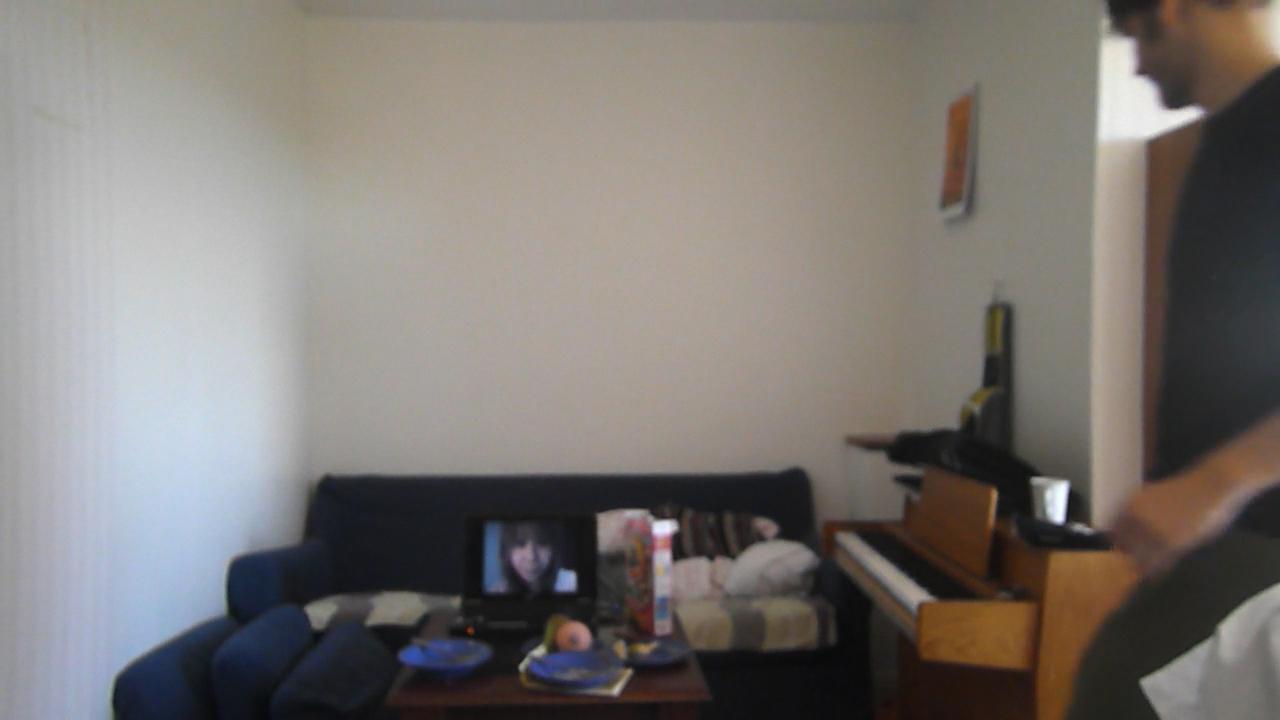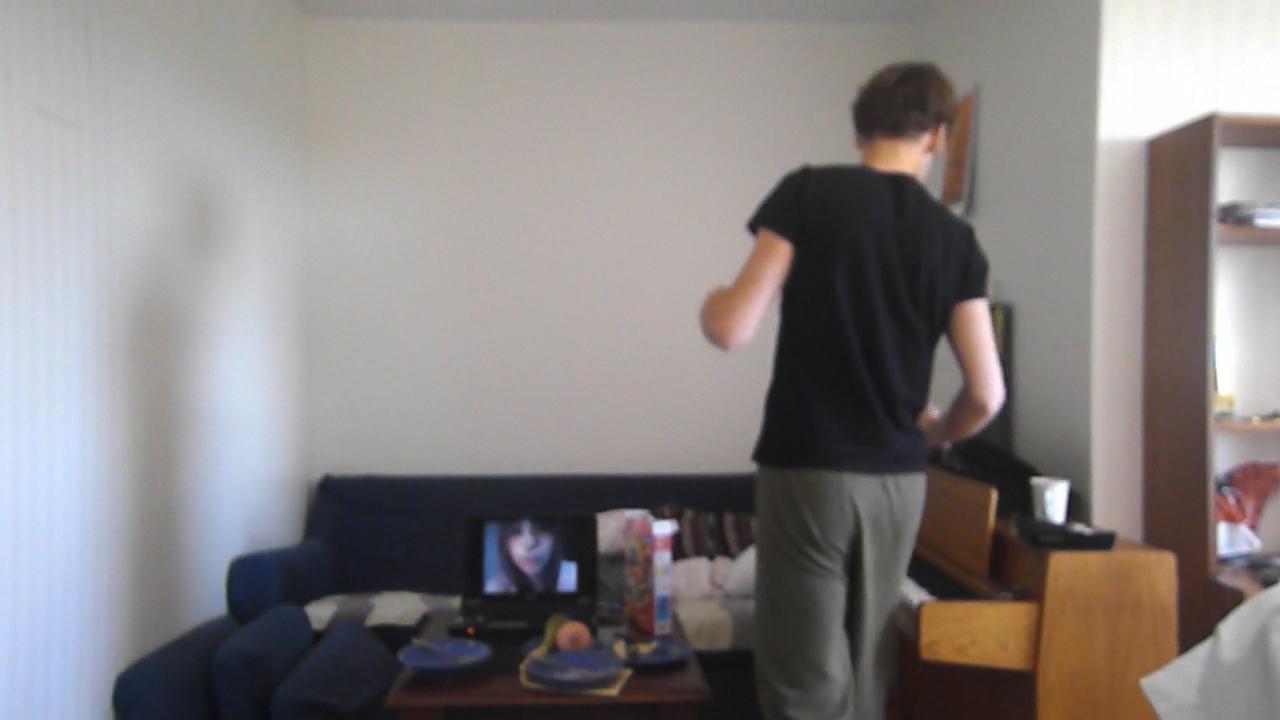AN DER SCHÖNEN BLAUEN DONAU
The setting is extremely simple, but well chosen: in the corner of a room is a blue sofa covered in pillows, together with a small table in front of it. A TV monitor is placed on the table in the direction of the camera in such a way that an Asian woman who is talking communicates directly with viewers. One cannot understand what she is saying. To the right, a piano is placed along a side wall, which is the actual scene of the mere one-and-a-half minute performance.
It is well known that Paul Wittgenstein, one of Ludwig Wittgenstein’s older brothers, made his career as a one-handed pianist, and also commissioned several composers to write pieces for the left hand. Yet in Vrba’s intimate video, hands serve only as body supports. The act of piano playing, which is simply cacophony here, is carried out by the male genitals of the performer. What begins as a crude joke ultimately becomes confusing. Is it a childish prank or actually a terse and tightly choreographed commentary on images of masculinity? Or an anti-tourism film poking fun at Austria’s furtive anthem by Johann Strauss?
AN DER SCHÖNEN BLAUEN DONAU can be easily set in relation to the art form Fluxus and the video also appears inspired by the theater sketch format. Yet ultimately, the work’s quality is actually found in the ambivalence of whether it is truly ridiculous or truly good, or both. It is not necessary to choose the one or the other. Instead, switching from the one state to the other is the true allure, which Vrba plies with perfect timing. Vrba bows together with the performer in front of an imagined audience in the end, indicating once again that one should not be all too certain whether it was really a staged joke or actually something else.
(Dietmar Schwärzler)
Translation: Lisa Rosenblatt
AN DER SCHÖNEN BLAUEN DONAU
2011
Austria
1 min 21 sec



